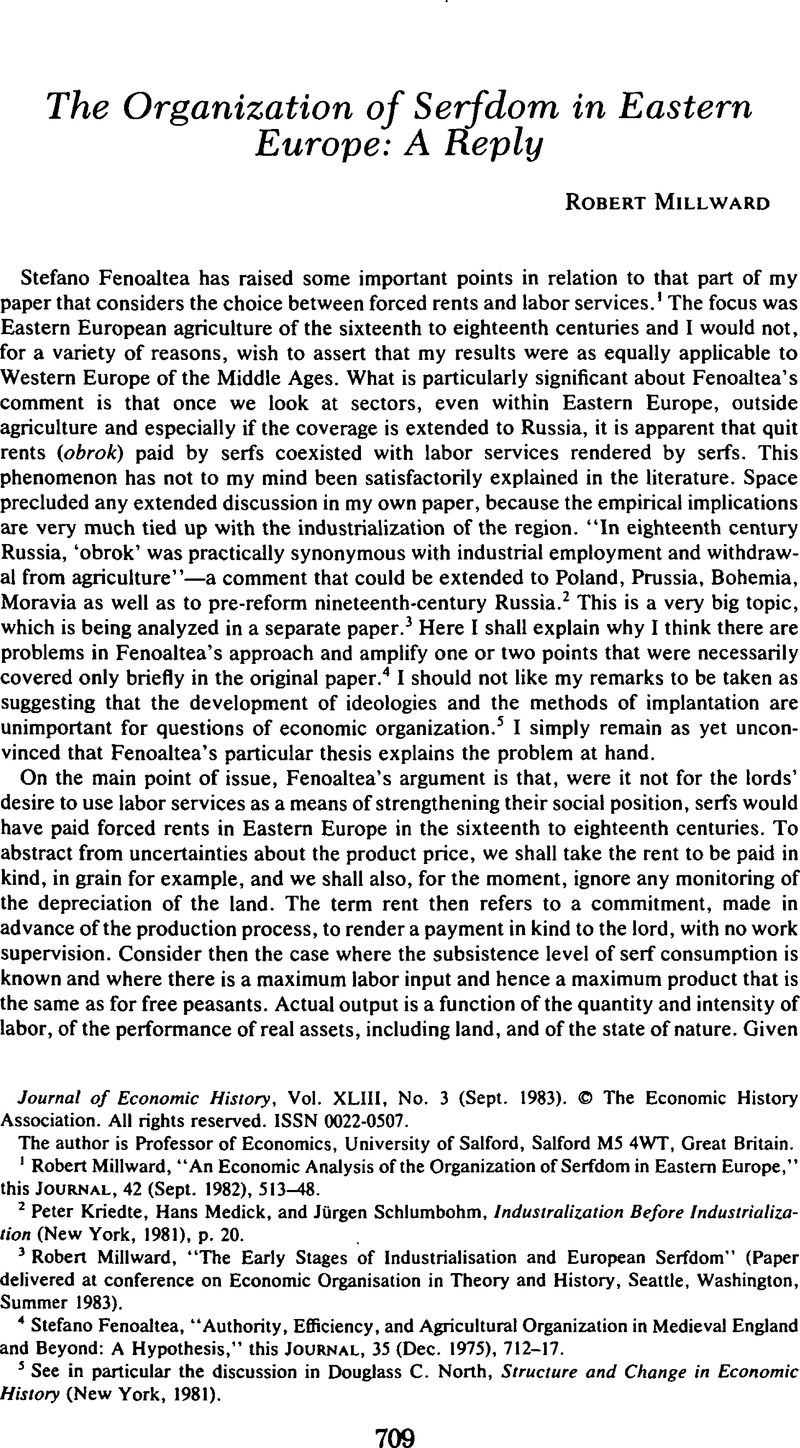Article contents
The Organization of Serfdom in Eastern Europe: A Reply
Published online by Cambridge University Press: 03 March 2009
Abstract

- Type
- Notes and Discussion
- Information
- Copyright
- Copyright © The Economic History Association 1983
References
1 Miliward, Robert, “An Economic Analysis of the Organization of Serfdom in Eastern Europe,” this Journal, 42 (09. 1982), 513–48.Google Scholar
2 Kriedte, Peter, Medick, Hans, and Schlumbohm, Jürgen, Industralizarion Before Industrialization (New York, 1981), p. 20.Google Scholar
3 Millward, Robert, “The Early Stages of lndustnalisation and European Serfdom” (Paper delivered at conference on Economic Organisation in Theory and History, Seattle, Washington, Summer 1983).Google Scholar
4 Fenoaltea, Stefano, “Authority, Efficiency, and Agricultural Organization in Medieval England and Beyond: A Hypothesis,” this Journal, 35 (12. 1975), 712–17.Google Scholar
5 See in particular the discussion in North, Douglass C., Structure and Change in Economic History (New York, 1981).Google Scholar
6 Fenoaltea, “A Comment,” this issue.
7 Ibid.
8 Millward, , “An Economic Analysis,” p. 526.Google Scholar
9 Ibid., p. 526 and top of p. 528.
10 Ibid., p. 528, 538–39.
11 Miliward, “The Early Stages.” Note that in practice each organizational arrangement contains complex mixtures of different elements. There are, for example, cases of labor services specified not in time but in output dimensions—so many sheafs of hay to be mown—so that the quicker this is performed the more time does the serf have for raising his own income. The major characterization of labor services under discussion, however, is that they are associated with work supervision.
12 Barzel, Yoram, “An Economic Analysis of Slavery,” Journal of Law and Economics, 20 (04 1977).CrossRefGoogle Scholar
13 Millward, , “An Economic Analysis,” pp. 538–39.Google Scholar
14 Ibid., pp. 540, 543.
- 1
- Cited by


